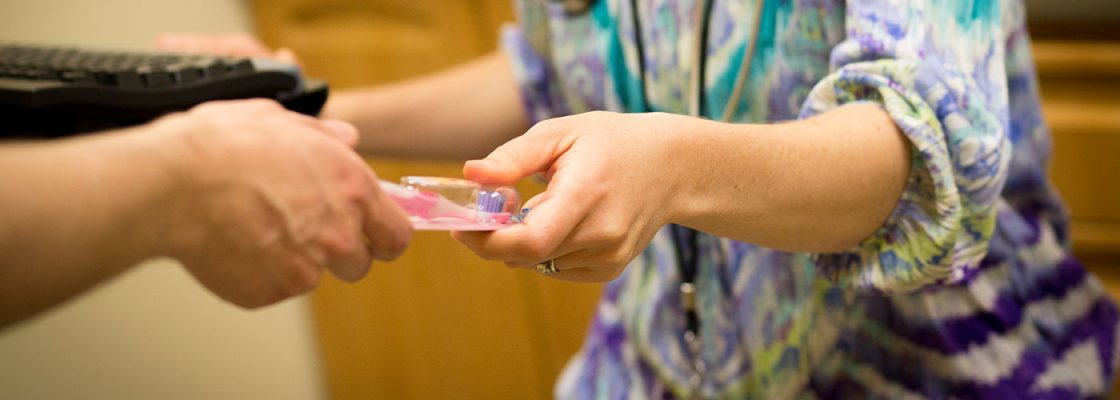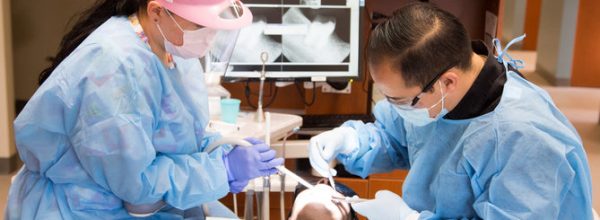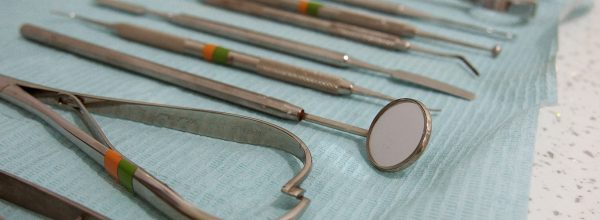What was the problem that needed to be addressed?
At the time of the innovation, New Mexico was ranked 49th out of the 50 states in the number of dentists per capita. With most of New Mexico’s population living in rural areas and approximately 75% of the already few oral health providers practicing in urban and private practices, New Mexico was on the verge of declaring an “Oral Health Emergency”.
What was the innovation?
A coalition of oral health stakeholders which included: safety-net providers, legislators, academicians, public health officials, insurers, community leaders and others gathered together to seek short- and long-term goals to address the dental “crisis”. This group of motivated leaders came up with a multi-pronged approach with the idea of the “health commons” model in the center.
A health commons is a “one-stop” community-health based primary care facility which provides medical care, public health, social services, behavioral health, and oral health services in one location. Today, these health commons can be found in both rural and urban areas across New Mexico.
The University of New Mexico (UNM) expanded dental health capacity by creating the Division of Dental Services. Within the first couple of years, the Dental Services Division had eight faculty members and consolidated services with the dental hygiene school. The division expanded oral health education by providing local primary care providers with oral health training and adding oral health rotations for family practice and emergency medicine residents. This also enabled pregnant women and children access to preventative and monitored dental services during their primary care visits. In cases which required increased expertise or referral, the UNM dental division accepted dental referrals from their primary care co-practioners without additional eligibility or registration requirements. In addition to expanding UNM’s training capacity, the dental division created partnerships with dental schools in other states so that their dental students could have rotation opportunities in New Mexico’s rural and underserved areas.
In addition to increasing oral health providers, new oral health policies were developed which helped expand the pool of dental providers available to the medically underserved population in the state. The New Mexico Human Services Department incentivized providing care to the underserved by increasing Medicaid reimbursements. New Mexico also adopted legislation which allowed for collaborative practice of dental hygienists and primary care facilities.
This cooperative legislation provided a platform for interdisciplinary collaboration in health commons and other community based sites across the state. This provided patients the opportunity to see their primary care provider and dental hygienist in the same health visit. Furthermore, many health common sites have dentists co-located and provide further dental access to patients on-site. Co-location of services provides one registration and easy, same day access to necessary providers.
Who were the key partners needed?
Health commons provide a community platform for patients to interact and receive needed care from a variety of health care providers. These partners include:
- Federally Qualified Health Centers (FQHCs) who provide primary care services to the underserved population.
- The University of New Mexico which provides technical and logistical assistance and trainings regarding the creation and upkeep of health commons.
- State agencies such as Human Services or the Department of Labor who work hand in hand with many aspects of the health commons.
- Community agencies such as non-profit organizations, food banks and shelters who address social and economic needs of health commons patients.
- A variety of other universities who partner with health commons to provide teaching opportunities for their students and residents.
- Community health workers who work to reduce health disparities and work with ethnically diverse and impoverish populations.
How was the innovation funded?
The original oral health training of providers and residents was funded by a $5,000 W. K. Kellogg Foundation grant. Now, funding for trainings, increased provider personnel and the building of new health common buildings are funded by a variety of national and state governmental grants, community investors and a variety of other stakeholders.
What were the results?
- Enhanced dental service capacity
- Expanded the pool of dental providers
- Creation of new interdisciplinary teams
- Development of new oral health policies
- Formation of mutually beneficial community partnerships
- Creation of a statewide, 24/7 telephone nurse advice line
- 62% reduction in emergency room visits regarding oral health
- Creation of a web-based interface for partner organizations to share medical information
What lessons were learned?
The health commons enabled collaboration for entities that may have previously struggled with interprofessional communication and collaboration. It created a cooperative environment that allowed groups such as public health agencies and primary care facilities to engage in stronger communication and teamwork. It supported collaboration instead of competition between community agencies and primary care systems. Moreover, these newly formed collaborations decreased costs and allowed additional funding to be shared by multiple partners.
Education and succinct explanation of processes and expectations of the project will enable less resistance to change. Using evidence-based resources and data to explain why changes are taking place and what changes still need to take place are key to successful transitions. Good messaging and robust education of staff, providers, community partners and policy makers about each of their defined roles in the change help to ensure all partners are making the proper changes toward a successful outcome.
Recommendations for other practices to replicate this approach:
Strategically address your need. Execute and plan short- and long-term goals to address every need. Although writing and receiving grants for new buildings are significant long-term goals, it is important to start providing the needed services as soon as possible; with or without a new building. Strategizing ways to provide needed care as soon as possible is a great place to start. Particularly, starting with community members and organizations that already have a particular interest in your program and planning with them from the beginning. Then, addressing barriers such as transportation and access to appointment and referrals are good next steps. Be reactive and pro-active in strategizing short- and long-term goals for your program.
Additional Resources:
Find this useful or interesting? We’re constantly sharing stuff like this. Sign up to receive our newsletter to stay in the loop.



